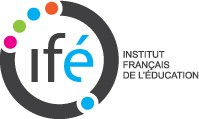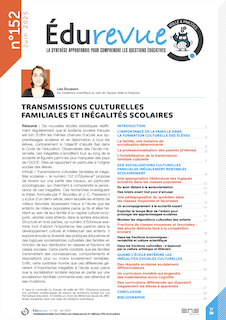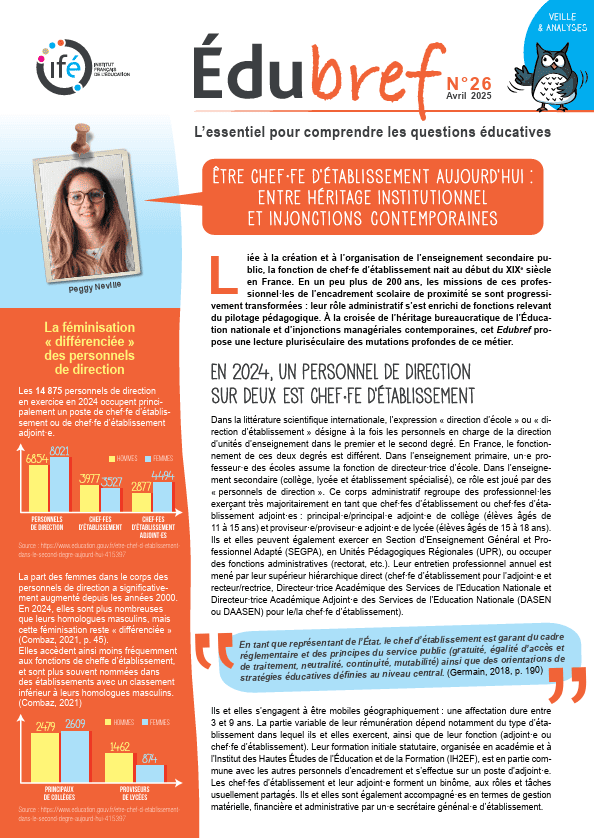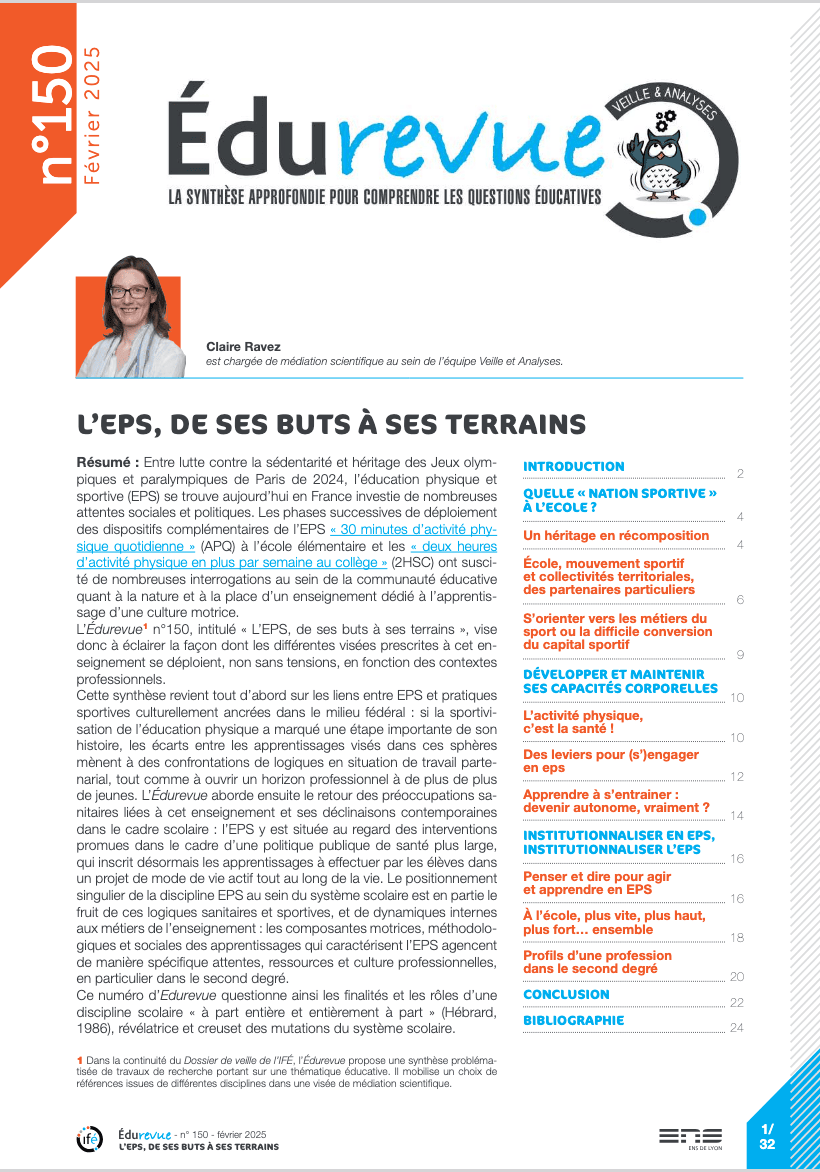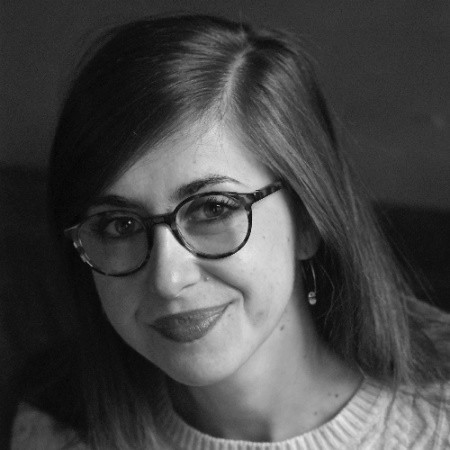La violence dans les établissements scolaires secondaires : quels changements organisationnels nécessaires ? : cas de recherche-intervention dans des lycées professionnels publics et privés
Auteur(s) : CHAPON Evelyne
Date de soutenance : 2006
Thèse délivrée par : Université Jean Moulin-Lyon 3
Section(s) CNU : section 06 : Sciences de gestion
Discipline(s) : Sciences de gestion
Sous la direction de : Véronique ZARDET
Compte tenu de l'organisation bureaucratique du système éducatif français, mais aussi d'une certaine diversité du tissu scolaire, nous pouvons nous interroger sur l'organisation interne des établissements secondaires et leurs performances économique et sociale. Cette interrogation est d'autant plus forte que, phénomène de société, la violence en milieu scolaire est une nouvelle donne. C'est aussi l'occasion de repenser l'organisation interne des établissements, des lycées professionnels fortement exposés à la violence, afin de créer un climat plus serein dans lequel personnels et élèves prennent plaisir à travailler. En quoi le fonctionnement d'un établissement scolaire contribue-t-il à exacerber la violence ou au contraire à la résorber ? L'objet, la violence, et le champ de notre recherche, les lycées professionnels intéressent les sciences de gestion. D'une part cette problématique de la violence (comportement déviant) est transposable à l'entreprise. D'autre part chaque établissement scolaire est une organisation finalisée, animée dans laquelle il est possible d'analyser les conséquences économiques et sociales de la violence. Notre objectif final est de rechercher des voies de prévention organisationnelles de cette violence. Notre travail de recherche s'inscrit dans un paradigme constructiviste, des études longitudinales, fortement contextualisées. Sur le plan méthodologique, nous nous appuyons sur les champs disciplinaires périphériques des sciences de gestion nécessaires à la compréhension de l'objet et du champ de notre recherche. Cependant nous nous positionnons en sciences de gestion, dans une perspective transformative. Nous nous appuyons plus particulièrement sur la théorie socio-économique de par le concept de coûts-performances cachés, des modes opératoires (conduite d'entretiens semi directifs, diagnostic socio économique, effet-miroir, avis d'expert), des outils de gestion (tableaux de bord, gestion par projet). Source de dysfonctionnements, l'interaction entre les structures et les comportements, porte atteinte aux savoir-faire des établissements publics et privés. La réciprocité entre les conditions de travail, l'organisation du travail, la gestion du temps, la communication coordination concertation, la formation intégrée, le pilotage stratégique et la violence scolaire est l'axe principal de notre démonstration. Les principaux résultats de notre approche exploratoire -diagnostic socio économique de trois établissements, calcul des coûts cachés liés à la violence, réflexion à une stratégie d'ensemble dans le cadre du projet d'établissement- montrent qu'il existe un fort potentiel de réflexion et d'action des acteurs. Des analyses fines, des idées ont été exprimées dans bon nombre d'entretiens. Par ailleurs l'implication d'une grande partie des personnels enseignants dans notre démarche d'intervention laisse entrevoir les bienfaits d'une dynamique participative. Cependant, l'analyse des groupes sociaux de l'organisation, la mise en lumière de comportements défensifs témoignent d'une certaine résistance au changement. Taking into account the bureaucratic organization of the French education and also the particular diversity of the school fabric, we can question internal organization of second-level schools and their economic and social performance. This question is all the more important since, violence in the school environment is a new phenomenon. On the other hand each educational establishment is an organisation managed with a specific mission in which it is possible to analyse the economic and social consequences of violence. Violence can be an opportunity to improve school organization. Meanwhile, educational establishments that find themselves in the same position, either cope with violence or try to stop it. We wonder if management and work organization have an impact on the internal climate. Does management help to resolve violence or does it exacerbate this phenomenon ? In addition to the field of management, we need to investigate sociology and educational fields in order to understand our subject. However management is interested in our research for two reasons. First of all, violence effects relationships within many companies and our ideas could be applied to them. On the other hand each educational establishment is an organisation managed with a specific mission in which it is possible to analyse the economic and social consequences of violence. Then we look at the subject from an organizational point of view. Our aim is two-fold. We estimate what has been done to prevent violence since this phenomenon is on the increase and we try to give impetus to organizational change. Our research is set in a constructivist paradigm, longitudinal, highly contextualised studies. We particularly rely on the Savall socio-economic theory, created by Henri Savall in 1974, which is source of social and economic performance. We refere dysfunctions and hidden costs/performance concepts, operating ways (semi-directive interviews, socio-economic diagnostics, mirror-effect, expert's opinions), management tools (charts management project by project). A source of dysfunction, the interaction between structures and behaviours, jeopardises the know-how of private and public schools. Reciprocity between dysfunctions and violence is the main axis of our demonstration : reciprocity between working conditions, work organisation, communication-coordination-cooperation, time management, integrated training, implementation of strategy and violence. Intervention-research took place in three professional high schools. 179 interviews beside teatchers, pupils and their relatives, high school headmasters and their staff allowed us to diagnosis dysfunctions and to estimate violence hidden costs. Then a project plan and an action were introduced in one of the three schools, specialy to prevent violence. In another school our diagnostic has been used to conceive the establishment project, that is to say the next five years establishment trend. 12 000 EUR per person per year is the violence hidden cost that we have estimated in one of the three secondary schools, that is to say our fieldwork. Headmasters and their staff, teatchers high reflexion and action potentiality is our major result. Many bright ideas, smart analysis appear in witnesses. Involvement of a large part of the teatchers shows the importance of personal participation management. Meanwhile social groups inside the three establishments, many kinds of defensive behaviors show a strong resistance to change.
URL : http://thesesbrain.univ-lyon3.fr/sdx/theses/notice.xsp?id=lyon3.2006.chapon_e.1-principal&id_doc=lyon3.2006.chapon_e.1&isid=lyon3.2006.chapon_e.1&base=documents&dn=1

